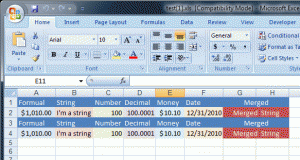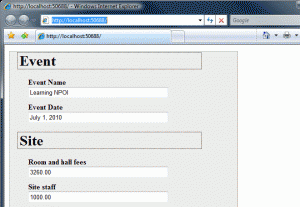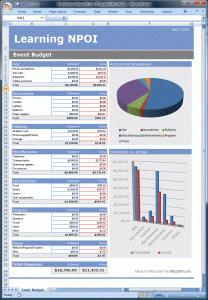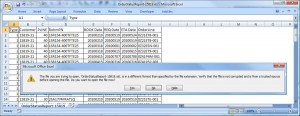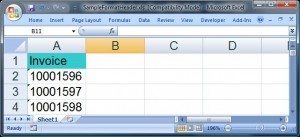Have you ever wanted to show one error message at a time, or create a different type of visual queue for a specific invalid element on a form? Using the validate options, you can easily create any effect you want.
The example below, is designed to show the first error message in a form and to set focus on that first element. The message is displayed in a basic JavaScript alert box, not very elegant but it makes for a simple demo.
<!DOCTYPE html PUBLIC "-//W3C//DTD XHTML 1.0 Transitional//EN" "http://www.w3.org/TR/xhtml1/DTD/xhtml1-transitional.dtd">
<html xmlns="http://www.w3.org/1999/xhtml">
<head>
<title>Show JS Alert - First Validation Error</title>
<script src="Scripts/jquery-1.4.2.js" type="text/javascript"></script>
<script src="Scripts/jquery.validate.js" type="text/javascript"></script>
<script type="text/javascript">
$(document).ready(function() {
$("#elForm").validate({
onfocusout: false,
invalidHandler: function(form, validator) {
var errors = validator.numberOfInvalids();
if (errors) {
alert(validator.errorList[0].message);
validator.errorList[0].element.focus();
}
},
rules: {
TextBox1: { required: true, minlength: 2 },
TextBox2: { required: true, minlength: 2 },
TextBox3: { required: true, minlength: 2 }
},
messages: {
TextBox1: { required: "TextBox1 Required", minlength: "TextBox1 MinLength" },
TextBox2: { required: "TextBox2 Required", minlength: "TextBox2 MinLength" },
TextBox3: { required: "TextBox3 Required", minlength: "TextBox3 MinLength" }
},
errorPlacement: function(error, element) {
// Override error placement to not show error messages beside elements //
}
});
});
</script>
<style type="text/css">
label { width: 90px; display: block; float: left; }
ul { list-style: none; }
ul li { line-height: 1.8; }
</style>
</head>
<body>
<form id="elForm" action="#">
<div>
<h1>jQuery Validation - Show First Error Only</h1>
<ul>
<li><label>Text Box 1</label><input type="text" name="TextBox1" id="TextBox1" value="" /></li>
<li><label>Text Box 2</label><input type="text" name="TextBox2" id="TextBox2" value="" /></li>
<li><label>Text Box 3</label><input type="text" name="TextBox3" id="TextBox3" value="" /></li>
</ul>
<input type="submit" id="submit" value="Validate" />
</div>
</form>
</body>
</html>
Here are the important parts to focus on.
1. invalidHandler, this option give you access to the current validator and all the errors messages/items via the “validator.errorlist”.
invalidHandler: function(form, validator) {
var errors = validator.numberOfInvalids();
if (errors) {
alert(validator.errorList[0].message); //Only show first invalid rule message!!!
validator.errorList[0].element.focus(); //Set Focus
}
}
2. errorPlacement, this function controls how error messages are displayed. Since we don’t want any error messages displayed by default, we can override the default errorPlacement with a empty method call.
errorPlacement: function(error, element) {
// Override error placement to not show error messages beside elements //
}
The end result is a alert box showing the first broken rule for the first invalid element on the page. In the example each input has 2 rules (required and minLength), if you enter a single character into the first text box the message will change from “TextBox1 Required” to “TextBox1 MinLength”.


